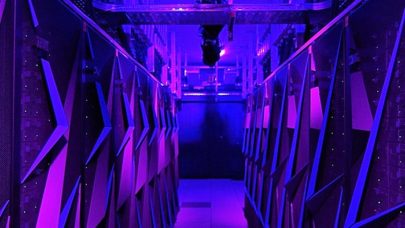
AMD Reports Record Revenue and $35B Deal to Buy Xilinx
October 27, 2020
AMD this morning reported record quarterly revenue of $2.8 billion and a finalized deal to buy FPGA-maker Xilinx for $35 billion in an all-stock transaction. Th Read more…

Intel Launches Stratix 10 NX FPGAs Targeting AI Workloads
June 18, 2020
Intel today introduced its first AI-optimized FPGA – the Stratix 10 NX – which features expanded AI Tensor blocks (30 multipliers and 30 accumulators), inte Read more…

IBM Claims No. 1 Commercial Supercomputer with Total Oil & Gas System
June 20, 2019
IBM can now boast not only the two most powerful supercomputers in the world, it also has claimed the top spot for a supercomputer used in a commercial setting. Read more…

AMD Posts Transitional First Quarter Ahead of Rome Launch
May 2, 2019
On the eve of its 50th anniversary, Advanced Micro Devices (AMD) reported sales of $1.27 billion for Q1 2019, down 10 percent quarter-over-quarter and 23 percen Read more…

DARPA, NSF Seek Real-Time ML Processor
March 18, 2019
A new U.S. research initiative seeks to develop a processor capable of real-time learning while operating with the “efficiency of the human brain.” The National Science Foundation (NSF) and the Defense Advanced Research Projects Agency jointly announced a “Real Time Machine Learning” project on March 15 soliciting industry proposals for “foundational breakthroughs” in hardware required to “build systems that respond and adapt in real time.” Read more…

HPC Reflections and (Mostly Hopeful) Predictions
December 19, 2018
So much ‘spaghetti’ gets tossed on walls by the technology community (vendors and researchers) to see what sticks that it is often difficult to peer through Read more…

Is Amazon’s Plunge into Server Chips a Watershed Moment?
December 11, 2018
For several years now the big cloud providers – Amazon, Microsoft Azure, Google, et al – have been transforming from technology consumers into technology cr Read more…

AMD Continues to Nip at Intel’s Heels
April 27, 2018
Advanced Micro Devices appears to making market share headway at the expense of long-time rival Intel Corp. based on quarterly results released this week. AMD reported quarterly revenue totaling $1.65 billion, up 40 percent from the same quarter last year. Read more…

- Click Here for More Headlines

Whitepaper
Transforming Industrial and Automotive Manufacturing
In this era, expansion in digital infrastructure capacity is inevitable. Parallel to this, climate change consciousness is also rising, making sustainability a mandatory part of the organization’s functioning. As computing workloads such as AI and HPC continue to surge, so does the energy consumption, posing environmental woes. IT departments within organizations have a crucial role in combating this challenge. They can significantly drive sustainable practices by influencing newer technologies and process adoption that aid in mitigating the effects of climate change.
While buying more sustainable IT solutions is an option, partnering with IT solutions providers, such and Lenovo and Intel, who are committed to sustainability and aiding customers in executing sustainability strategies is likely to be more impactful.
Learn how Lenovo and Intel, through their partnership, are strongly positioned to address this need with their innovations driving energy efficiency and environmental stewardship.
Download Now
Sponsored by Lenovo
Whitepaper
How Direct Liquid Cooling Improves Data Center Energy Efficiency
Data centers are experiencing increasing power consumption, space constraints and cooling demands due to the unprecedented computing power required by today’s chips and servers. HVAC cooling systems consume approximately 40% of a data center’s electricity. These systems traditionally use air conditioning, air handling and fans to cool the data center facility and IT equipment, ultimately resulting in high energy consumption and high carbon emissions. Data centers are moving to direct liquid cooled (DLC) systems to improve cooling efficiency thus lowering their PUE, operating expenses (OPEX) and carbon footprint.
This paper describes how CoolIT Systems (CoolIT) meets the need for improved energy efficiency in data centers and includes case studies that show how CoolIT’s DLC solutions improve energy efficiency, increase rack density, lower OPEX, and enable sustainability programs. CoolIT is the global market and innovation leader in scalable DLC solutions for the world’s most demanding computing environments. CoolIT’s end-to-end solutions meet the rising demand in cooling and the rising demand for energy efficiency.
Download Now
Sponsored by CoolIT
Advanced Scale Career Development & Workforce Enhancement Center
Featured Advanced Scale Jobs:
HPCwire Resource Library
HPCwire Product Showcase
© 2024 HPCwire. All Rights Reserved. A Tabor Communications Publication
HPCwire is a registered trademark of Tabor Communications, Inc. Use of this site is governed by our Terms of Use and Privacy Policy.
Reproduction in whole or in part in any form or medium without express written permission of Tabor Communications, Inc. is prohibited.
























